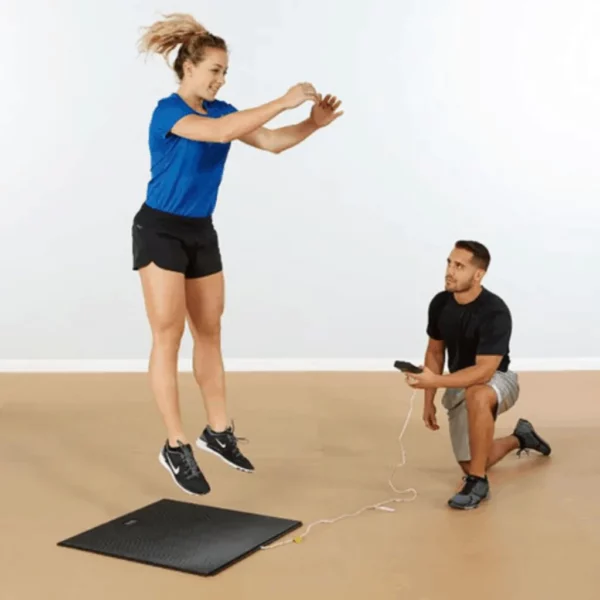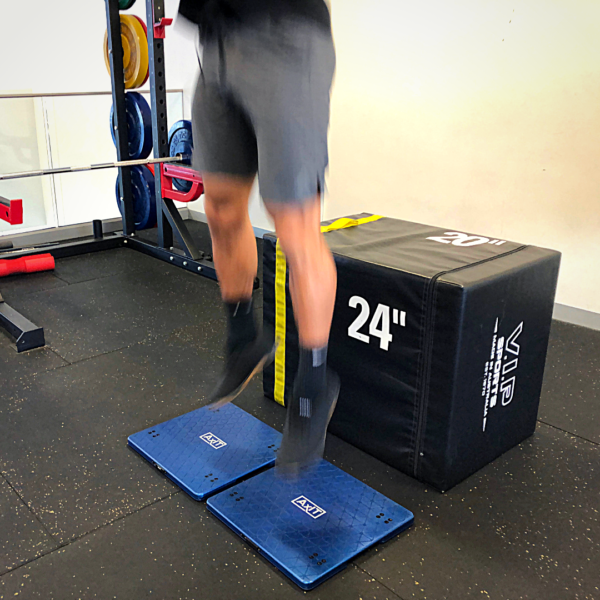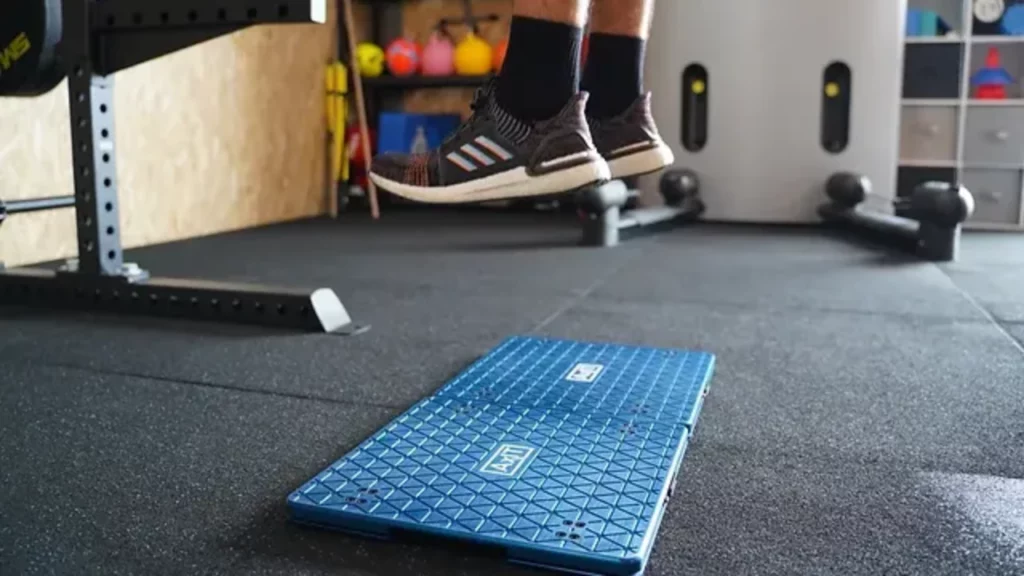Are you an everyday health and fitness practitioner looking to improve your client’s performance outcomes? Jump mats and force plates are two popular tools that can be used to measure and assess various aspects of athletic performance. However, with so many options available, it can be difficult to determine which tool is the best fit for your needs.
In this blog, we will compare the pros and cons of jump mats and force plates for everyday health and fitness practitioners, so you can make an informed decision on which tool is the right choice for you and your clients. We’ll discuss the benefits and limitations of each tool, and provide guidance on how to choose the right tool for your specific goals and budget.
So, whether you’re a personal trainer, coach, or physical therapist, read on to learn more about the differences between jump mats and force plates and how they can be used to improve athletic performance.
Jump Mats:

Pros:
Portable: Jump mats are generally more lightweight and portable than force plates, which makes them easier to transport to different locations.
Cost-effective: Jump mats are generally less expensive than force plates, which may make them a more affordable option for smaller fitness facilities or individuals.
Easy to use: Jump mats are simple to set up and use, and they provide a quick and easy measurement of jump height and flight time.
Cons:
Limited data: Jump mats only measure jump height and flight time, which may not provide enough information for more detailed assessments or programming.
Less reliable: Jump mats may be less reliable than force plates because they have a lower sampling rate, which may result in errors or inaccuracies in the measurements. Inferior quality jump mats may also have a “lag” time between when the switch mechanism engages as on.
Less versatile: Jump mats are limited to measuring vertical jump performance and may not be useful for other types of movements or activities.
Force Plates:

A force plate operates by measuring dynamic forces exerted on its surface with high precision. When an individual stands on the force plate, the embedded sensors detect and record the initial force exerted by their body weight. As the person moves—whether jumping, lifting, or shifting their weight—the sensors continuously monitor changes in the applied forces. When the individual jumps and their feet leave the plate, the force readings drop to zero. Upon landing, the sensors detect the sudden increase in force again. The force plate captures detailed data on the magnitude of these forces, which are then used to calculate various metrics such as ground reaction force, balance, and jump mechanics or isometric strength. This precise measurement of force dynamics is invaluable for analyzing athletic performance, diagnosing biomechanical issues, and guiding rehabilitation protocols.
Pros:
More precise data: Force plates such as AxIT Stomp-IT provide more precise data on multiple variables, such as vertical ground reaction force, contact time, rate of force development, and can calculate key performance results such as jump height, reactive strength index, take off velocity and braking/propulsion impulse.
Detailed information: AxIT Stomp-IT can provide detailed information about an individual’s movement patterns and weight distribution during an activity to detect imbalances or can be useful for assessing and correcting techniques.
Versatile: Dual portable force plates like the AxIT Stomp-IT can be used for a wide range of activities not just jumps. These include squat and lunge assessments, landing technique and force as well as isometric strength assessments. All AxITs devices also come with the capability to integrate with your PMS or AMS system to quickly get your testing data where you need to store it.
Cons:
More expensive: Force plates are generally more expensive than jump mats, which may be a barrier for some fitness facilities or individuals – however AxIT Stomp-IT is the most affordable smart force plate system available so this may not be as prohibitive as with some other brands.
Less portable: Force plates are generally larger and heavier than jump mats, which may make them more difficult to transport to different locations – however AxIT Stomp-IT force plates are some of the lowest profile and lightest dual force plates available. As a completely wireless solution, they also allow for fast setup when testing on the move.
More complex: Force plates may require more technical expertise to set up and use effectively, which may be a barrier for some health and fitness professionals – however, AxITs software is designed with the everyday practitioner in mind to simply display the information health professionals need to measure the performance of their clients intuitively.
Based on these factors, it is clear that force plates such as the AxIT Stomp-IT provide more comprehensive and precise data than jump mats, which makes them the better choice for health and fitness professionals who want the best and most versatile piece of equipment for their needs if they can be afforded. However, health and fitness professionals should carefully consider their specific needs and budget when deciding which tool to invest in.
This is why Strength By Numbers provides an AxIT Discovery Session demo to help you choose the right equipment for you. In this online demonstration, our team will ask your questions to learn about your business needs and share examples of how our equipment can help your clients get better results and save valuable admin time in your business. Click here to book a time to speak with our team today!

